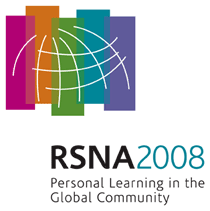
Abstract Archives of the RSNA, 2008
Kelley Woodruff Marshall MD, Presenter: Nothing to Disclose
Michael T. Busch MD, Abstract Co-Author: Nothing to Disclose
David L. Marshall MD, Abstract Co-Author: Nothing to Disclose
To describe the clinical presentation, proposed mechanism of injury, radiologic appearance and surgical findings of a cohort of pediatric patients presenting with elbow pain and MR confirmed trochlear osteochondral injuries.
Qualifying patients presenting between 1/2001 and 10/2007were identified retrospectively via keyword search in an RIS linked database. The imaging studies were reviewed by a single pediatric radiologist subspecializing in musculoskeletal imaging. The lesions were characterized by size, location, and appearance. Coexisting injuries were documented. The patient’s presentation, clinical/rehabilitation course and surgical findings were summarized by sports medicine referring colleagues. Sport/position played, character and location of pain, limitation of motion, duration of symptoms and arthroscopic findings were documented.
Ten patients (8 male, 2 female) were identified ranging in age from 10 years 4 mo. to 16 years 2 mo; mean age = 14.0 years. Trochlear osteochondral lesions were identified by MR (4) or MR arthrography (6). Character of pain upon presentation was varied. Patients were typically pain free at rest yet complained of posterior pain when participating in their sport of choice. Lesions were seen more commonly in throwing (7) and tumbling (3) athletes. MR/MRA revealed similar appearing lesions occurring exclusively at the posterior and inferior aspect of the lateral spool of the trochlea. Lesions measured 7 mm-14 mm. In all but one patient, the overlying articular cartilage was intact. The lesions were characteristically circular in contour and demonstrated a narrow zone of transition between normal and abnormal subchondral bone. 5 children went on to arthroscopic evaluation. Probing of intact articular cartilage led to discovery of soft devasularized subchondral bone. Debridement and microfracture was performed in these 5 patients with all experiencing resolution of symptoms and return to play.
Osteochondral injuries of the trochlea are uncommon lesions that should be considered in the pediatric athlete presenting with chronic elbow pain including throwers presenting with “little league elbow.” We postulate that the lesion likely represents a hybrid lesion between avascular necrosis and osteochondritis dissecans. In this limited series, patients progressing to arthroscopy responded well to debridement and microfracture techniques.
Marshall, K,
Busch, M,
Marshall, D,
SSR Award Winning Paper: Osteochondral Lesions of the Lateral Trochlea in the Pediatric Athlete with Elbow Pain. Radiological Society of North America 2008 Scientific Assembly and Annual Meeting, February 18 - February 20, 2008 ,Chicago IL.
http://archive.rsna.org/2008/7002493.html

